List of Authors
>>About this blog
Recent blog post
|
[Shitamachi Tom]
Nov. 20, 2014 09:00
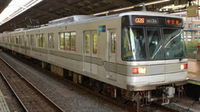 Chuo-ku is a convenient area with a well-developed transportation network. In public transportation, JR, subways, metropolitan buses, community buses, etc. run vertically and horizontally. The familiar thing may be the "Ginza Line" that passes through Ginza and Nihonbashi, but the other thing that you must not forget on the subway line is the "Hibiya Line". There are seven stations in the ward that exceed the Ginza Line, and it is an important route not only for residents but also for many customers. Chuo-ku is a convenient area with a well-developed transportation network. In public transportation, JR, subways, metropolitan buses, community buses, etc. run vertically and horizontally. The familiar thing may be the "Ginza Line" that passes through Ginza and Nihonbashi, but the other thing that you must not forget on the subway line is the "Hibiya Line". There are seven stations in the ward that exceed the Ginza Line, and it is an important route not only for residents but also for many customers.
The Hibiya Line was planned at an early stage to enhance the convenience of transportation in Tokyo, and was built from the beginning on the premise of mutual direct access to private railways. After partially opening in 1961 (Showa 36), construction was rushed in time for the previous Tokyo Olympics, and in 1964 (Showa 39), the entire line was opened. This year marks the 50th anniversary of this year. Indeed, it can be said that it is a railway line that was born and nurtured along with the history of the development of Japan and Tokyo after the war. Among the railway lines, the most presence is the stations in Chuo-ku. It runs frequently in small areas and is also useful as a foot for flow in the area.

For a long time on the Hibiya Line, silver vehicles with a humorous face of the 3000 series have been popular. The cover of the commemorative pamphlet distributed at Tokyo Metro is also displayed. After all, it was the first "semi-stainless vehicle" adopted by the subway at that time. For the first time, ATC (automatic train control device) was installed to improve safety. I think it was a revolutionary famous car, including its design.
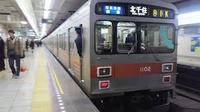 Since then, a vehicle wearing a silver belt called the 03 series is now running. There are also vehicles from the Tobu Railway, which is mutually accessible. Until last year, we had been interacting with the Tokyu Line, so we sometimes saw Tokyu Car Corporation, but it has disappeared and I feel a little lonely. Tokyo Metro and Tobu have announced plans to launch new vehicles in fiscal 2016. It is said that the current 18m8 formations will be unified to 20m7 formations by 2019, and home doors will be developed. More and more interest in the evolving Hibiya Line. Since then, a vehicle wearing a silver belt called the 03 series is now running. There are also vehicles from the Tobu Railway, which is mutually accessible. Until last year, we had been interacting with the Tokyu Line, so we sometimes saw Tokyu Car Corporation, but it has disappeared and I feel a little lonely. Tokyo Metro and Tobu have announced plans to launch new vehicles in fiscal 2016. It is said that the current 18m8 formations will be unified to 20m7 formations by 2019, and home doors will be developed. More and more interest in the evolving Hibiya Line.
The Hibiya Line does not run very deep because the construction method of excavating roads from the ground at that time was adopted. Because of that, there are sharp curves here and there to basically run under the road. The creaking sound as you pass through the curve from the vent on the ground may be heard. Somehow it's a familiar train. Please use the Hibiya Line when working, shopping, or strolling in Chuo-ku. You can visit various towns.
[Sam]
Nov. 19, 2014 14:00
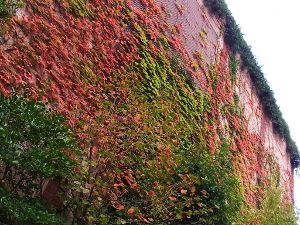 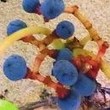 Autumn gradually deepens, Autumn gradually deepens,
The sunset is getting faster, and it makes you feel that the coming winter is approaching soon.
The leaves of the trees are colorfully colored in the planting of Harumi Triton Square, but this time we will focus on autumn leaves.
Japanese dogwood, Yoshino cherry tree, Salsberg, Hasenoki and Nishikigi are dyed red.
Attention is paid to "Natsuta" (also known as Nishizukita) of the vine family.
Spring buds, lush greenery in summer, autumn leaves, winter vine patterns, and plants with many highlights throughout the year.
Stretch the beard and climb the rocks, trees, and walls with the suction cup at the tip.
It is said that when the trunk grows thicker, it sticks out and sticks.
It hides under the leaves and produces small fruits similar to grapes.
The birds come in and it's rugged.
The vivid red color is not enemies to gozenoki, etc., but the autumn color gradation that covers the entire wall of the Triton parking building creates a unique atmosphere and is worth seeing.
Japanese dogwood Salsberg Rose tree Yoshino cherry tree Squirrel
    
[Dimini ☆ Cricket]
Nov. 19, 2014 09:00
Kachidokibashi, which connects the Tsukiji area of Chuo-ku and the Kachidoki area, is a nationally designated important cultural property.
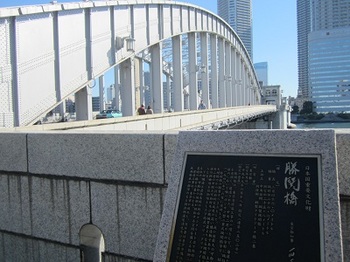
This bridge is a Futaba jumping bridge completed in 1940, and the center of the bridge jumps up, and the substation provided on the Tsukiji side is now the Kachidokibashi Museum. Has become
In front of the museum, there is also a stone monument of "Kachidoki no Ishi". This "handing" was established in 1905, and the name "Kachidoki" is said to be due to the fall of Port Arthur in the Russo-Japanese War.
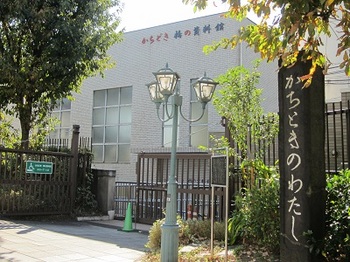
On the wall of the museum, there is a panel of "Kachidokibashi Substation" that gives you a sense of history.
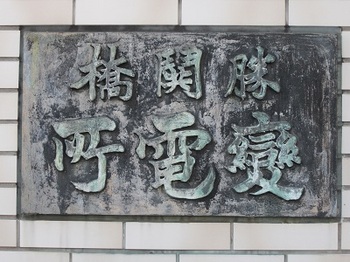
On the first floor of the museum, a generator that operated Kachidokibashi is preserved and displayed as it was at that time.
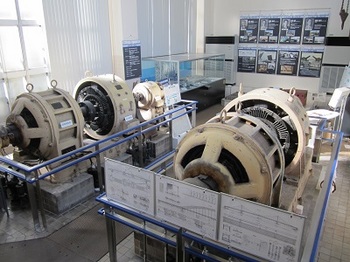
When you go up the stairs, you can see the distribution board of electrical equipment on the second floor.
When I entered the building, I smelled the oil faintly and asked the receptionist, "Do you still put the oil on the machine?" Does the answer "I don't mind" mean the remaining incense at the substations?
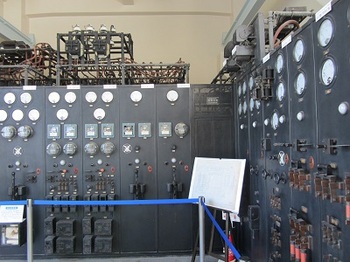
The museum is open from 9:30 to 16:30.
Closed days are days, months and Wednesday, and admission is free.
There is also a tour where you can see the pier.
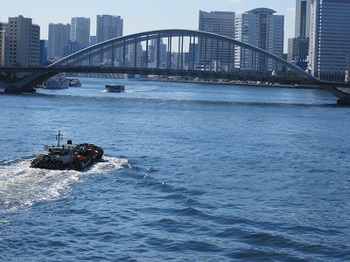
By the way, the photo above  is Tsukiji Ohashi, the newest bridge seen from Kachidokibashi. is Tsukiji Ohashi, the newest bridge seen from Kachidokibashi.
http://www.kensetsu.metro.tokyo.jp/kachidoki/ (http://www.kensetsu.metro.tokyo.jp/index.html)
[Sam]
Nov. 18, 2014 14:00
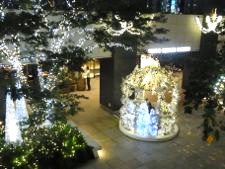 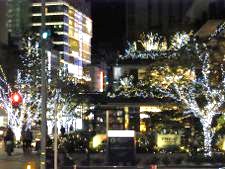
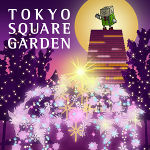 Tokyo Square Garden is the second year of its opening. Tokyo Square Garden is the second year of its opening.
From November 7th, "WINTER ILLUMINATION 2014-Twinkle Star Avenue-" started.
The concept this time is "Star Light".
The illuminations attached to the trees planted in the "Kyobashi no Oka" superimposed greening space from the road street trees are three-dimensionally constructed and are colored with sophisticated white & champagne high-quality sparkle.
The number of balls is about 170,000.
This year, a gazebo (gazebo)-shaped symbol decoration appears in the underground plaza.
Inside, a Christmas tree is decorated, benches are installed, and can be used as a photo spot and a resting place.
Lighting period: From November 7 to February 28, 2015
Lighting time: 16:00~24:00
[Silver]
Nov. 18, 2014 09:00
Today, we take a walk from Tsukiji River Park at St. Luke's International University, St. Luke's Tower, and Akatsuki Park.
In Tsukiji River Park, "Hananoki" is beginning to turn red.
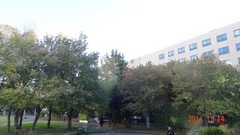
Autumn leaves of St. Luke's International University. The cherry blossoms were blooming in October.
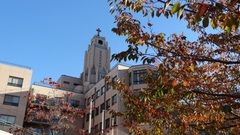 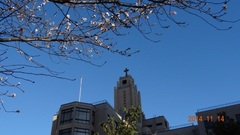
Heading toward St. Luke's Tower, the maple leaf maple is transforming beautifully golden with green leaves.
The trees in Akatsuki Park are also yellow leaves and autumn leaves.
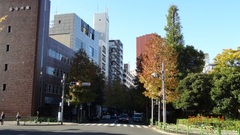
When you go to the Sumida River Terrace, you will see the buildings of Okawabata and the cherry blossoms in October.
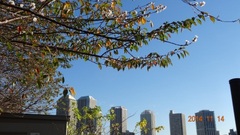
Please enjoy a walk from Akashicho to Tsukiji at this time of Koharu weather.
Is the expiration date of yellow leaves and autumn leaves until around November 23?
We recommend a restaurant on the first floor of St. Luke's Tower, a sushi restaurant in Tsukiji 6-chome and 5-chome, a Japanese food Chiri-hama Beach, and Tentake along Harumi-dori St..
[Sam]
Nov. 17, 2014 17:00
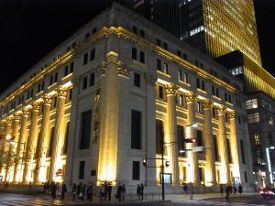  On November 14th (Fri), winter illuminations at Mitsui-related commercial facilities in the Nihonbashi area (Cored Nihonbashi / Coledo Muromachi 1 / Coledo Muromachi 2 / Coledo Muromachi 3 / Nihonbashi Mitsui Tower) are lit. On November 14th (Fri), winter illuminations at Mitsui-related commercial facilities in the Nihonbashi area (Cored Nihonbashi / Coledo Muromachi 1 / Coledo Muromachi 2 / Coledo Muromachi 3 / Nihonbashi Mitsui Tower) are lit.
Cored Muromachi 2.3, which is celebrating its first Christmas, and the reopening Mitsui Tower Dining, a food and beverage zone on the first basement floor of Mitsui Tower, "Cored Muromachi Tower Dining" and a new face also appear.
The motif of this year's winter illumination is the Japanese tradition "Edo Kiriko".
Edo Kiriko has attracted people with various geometric patterns.
Traditional patterns such as "Kagome Bun (Cored Muromachi 1)", "Yakubun (Cored Muromachi 2" and "Hemp leaf Bun (Cored Muromachi 3)" are arranged in oriental lamp to create a night in Nihonbashi.
The title is "Modern EDO KIRIKO".
Lighting period: From November 14 to February 1, 2015
Lighting time: 16:00~24:00
Nihonbashi has prospered as a commercial and cultural center since the Edo period, and is a city where tradition and newness coexist.
With the traditional Edo Kiriko as a new expression, Japanese art will brilliantly color Nihonbashi during the Christmas season.
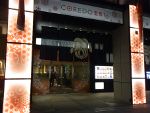 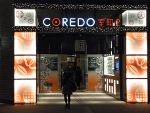 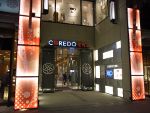
Coredo Muromachi 1 Coredo Muromachi 2 Coredo Muromachi 3
|
Links
|
 Chuo-ku is a convenient area with a well-developed transportation network. In public transportation, JR, subways, metropolitan buses, community buses, etc. run vertically and horizontally. The familiar thing may be the "Ginza Line" that passes through Ginza and Nihonbashi, but the other thing that you must not forget on the subway line is the "Hibiya Line". There are seven stations in the ward that exceed the Ginza Line, and it is an important route not only for residents but also for many customers.
Chuo-ku is a convenient area with a well-developed transportation network. In public transportation, JR, subways, metropolitan buses, community buses, etc. run vertically and horizontally. The familiar thing may be the "Ginza Line" that passes through Ginza and Nihonbashi, but the other thing that you must not forget on the subway line is the "Hibiya Line". There are seven stations in the ward that exceed the Ginza Line, and it is an important route not only for residents but also for many customers.![]()
 Since then, a vehicle wearing a silver belt called the 03 series is now running. There are also vehicles from the Tobu Railway, which is mutually accessible. Until last year, we had been interacting with the Tokyu Line, so we sometimes saw Tokyu Car Corporation, but it has disappeared and I feel a little lonely. Tokyo Metro and Tobu have announced plans to launch new vehicles in fiscal 2016. It is said that the current 18m8 formations will be unified to 20m7 formations by 2019, and home doors will be developed. More and more interest in the evolving Hibiya Line.
Since then, a vehicle wearing a silver belt called the 03 series is now running. There are also vehicles from the Tobu Railway, which is mutually accessible. Until last year, we had been interacting with the Tokyu Line, so we sometimes saw Tokyu Car Corporation, but it has disappeared and I feel a little lonely. Tokyo Metro and Tobu have announced plans to launch new vehicles in fiscal 2016. It is said that the current 18m8 formations will be unified to 20m7 formations by 2019, and home doors will be developed. More and more interest in the evolving Hibiya Line.![]()



























